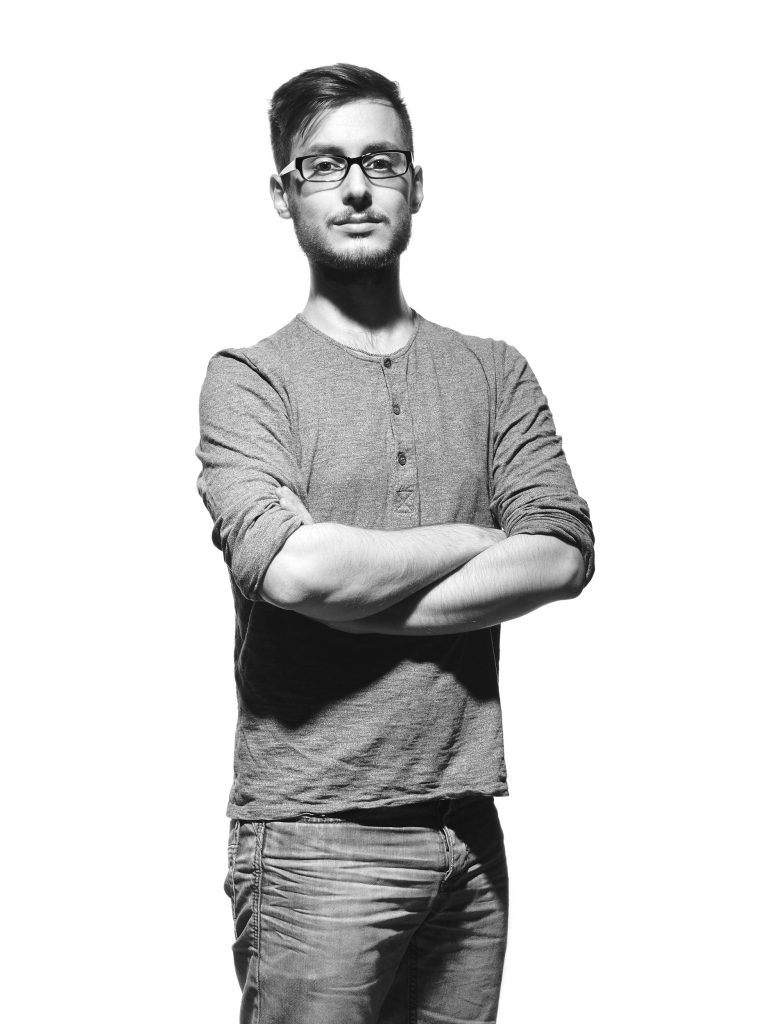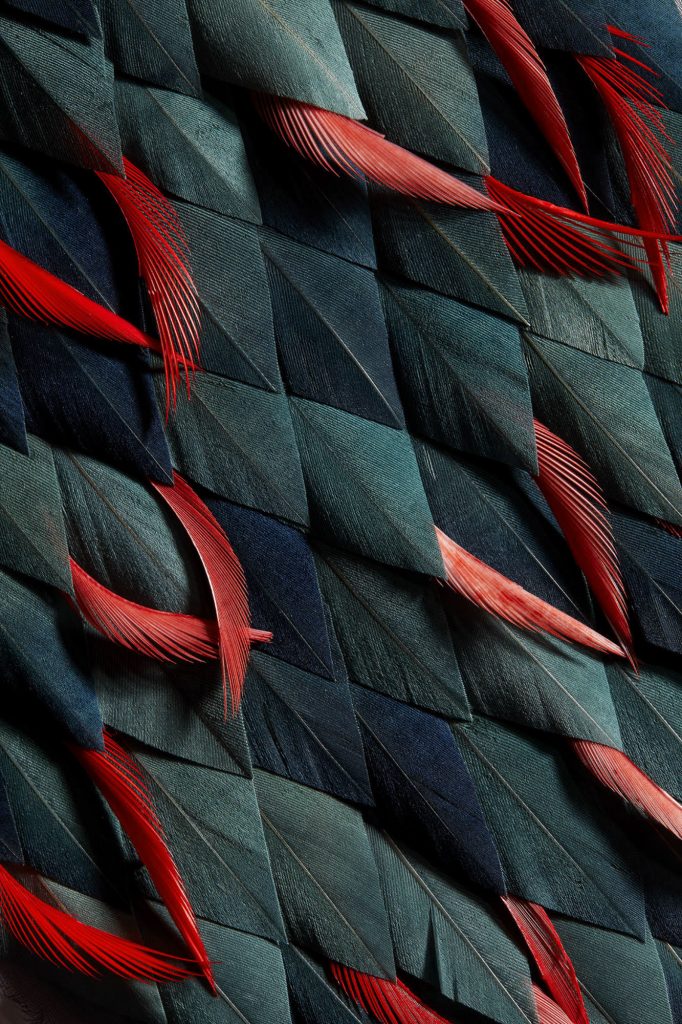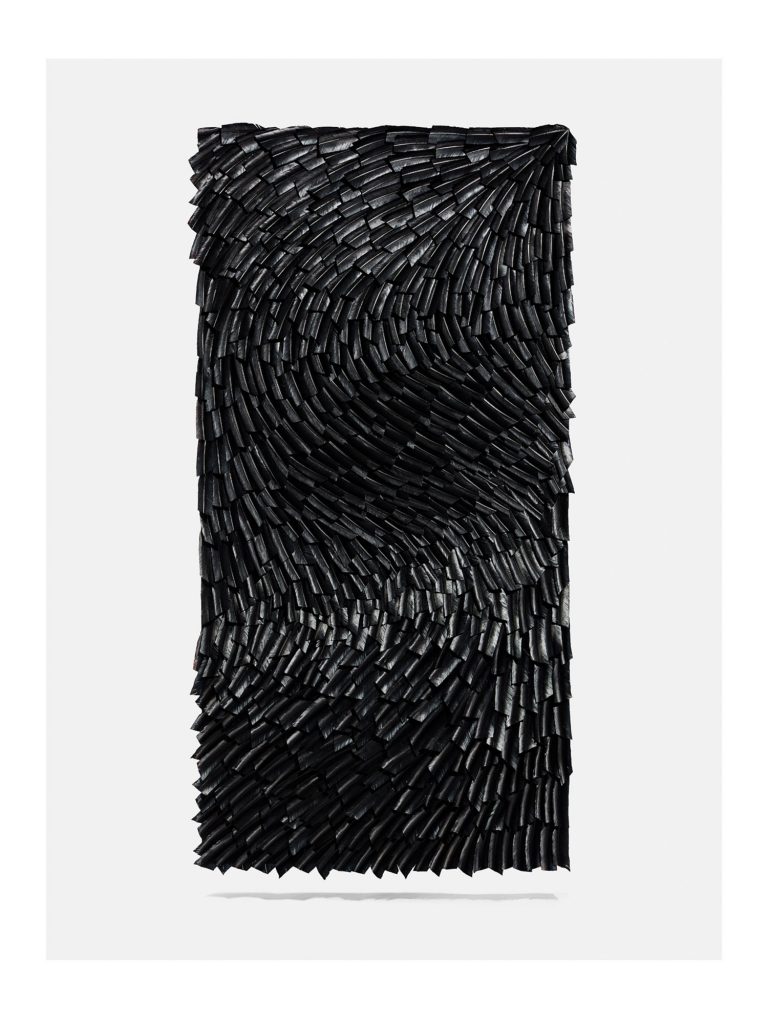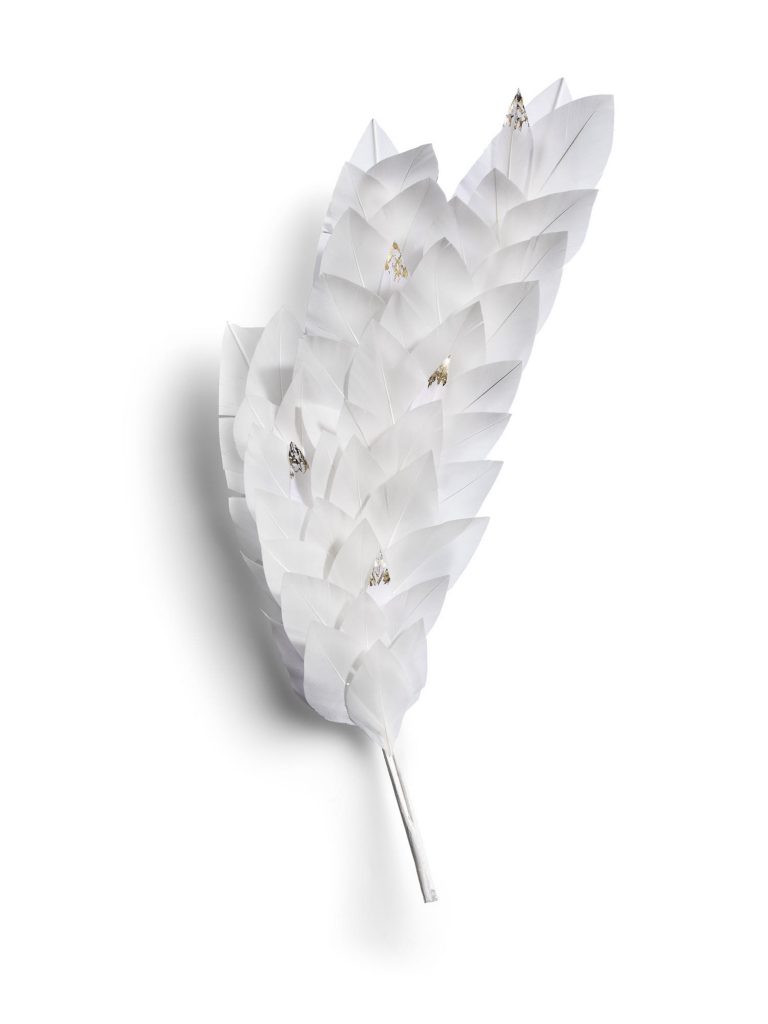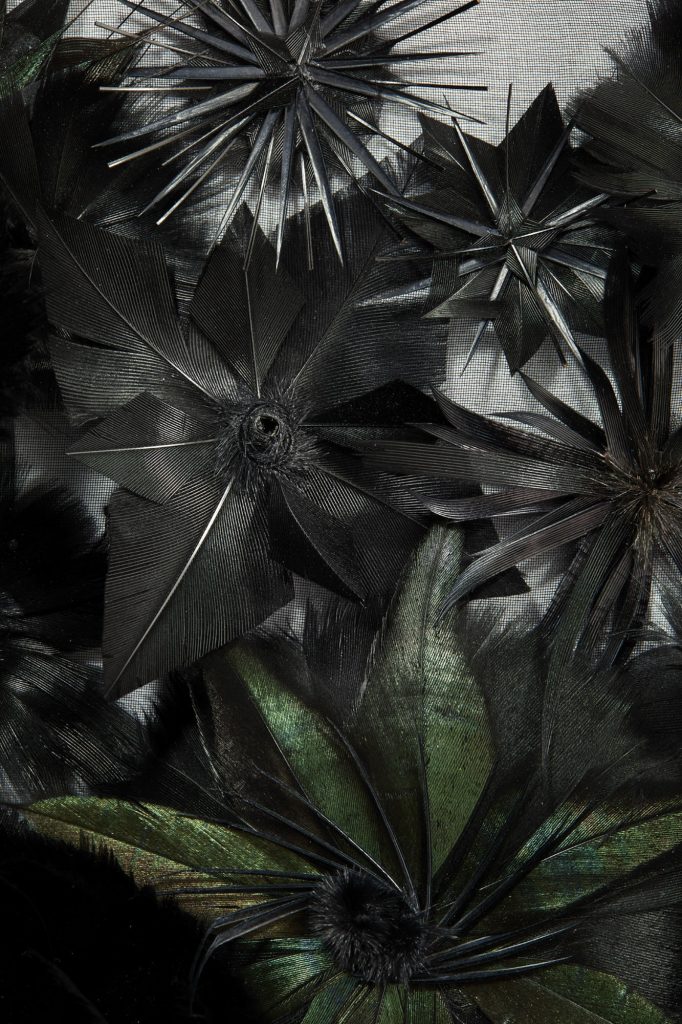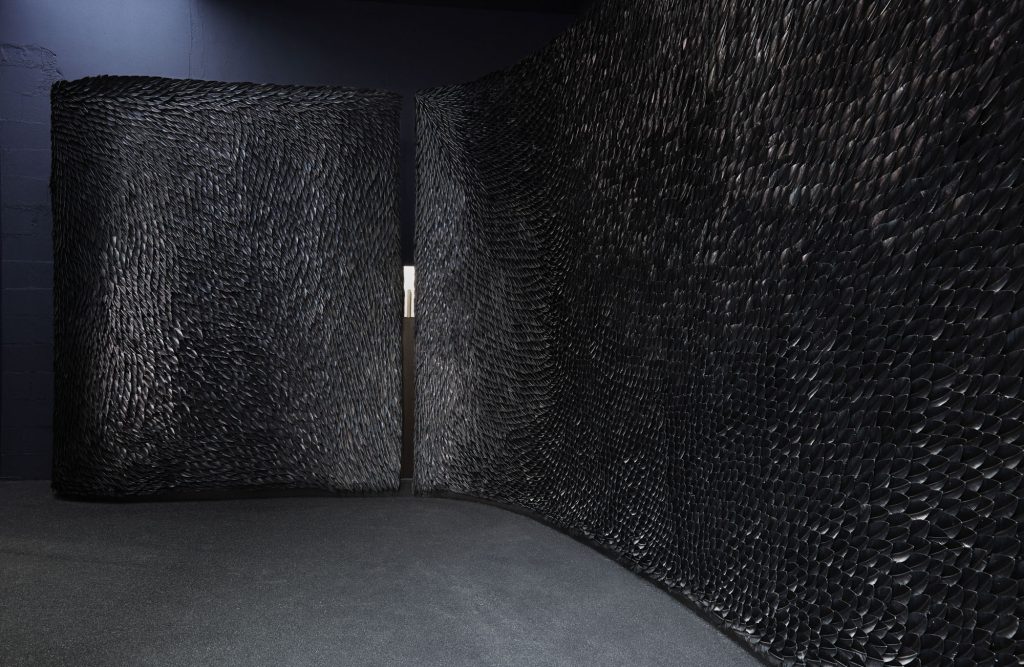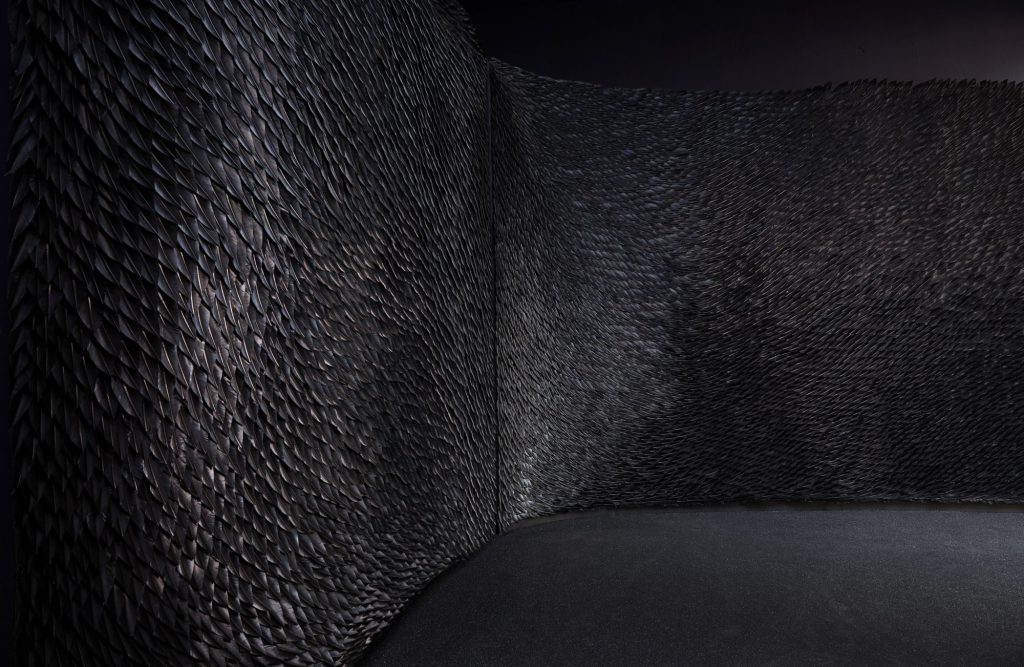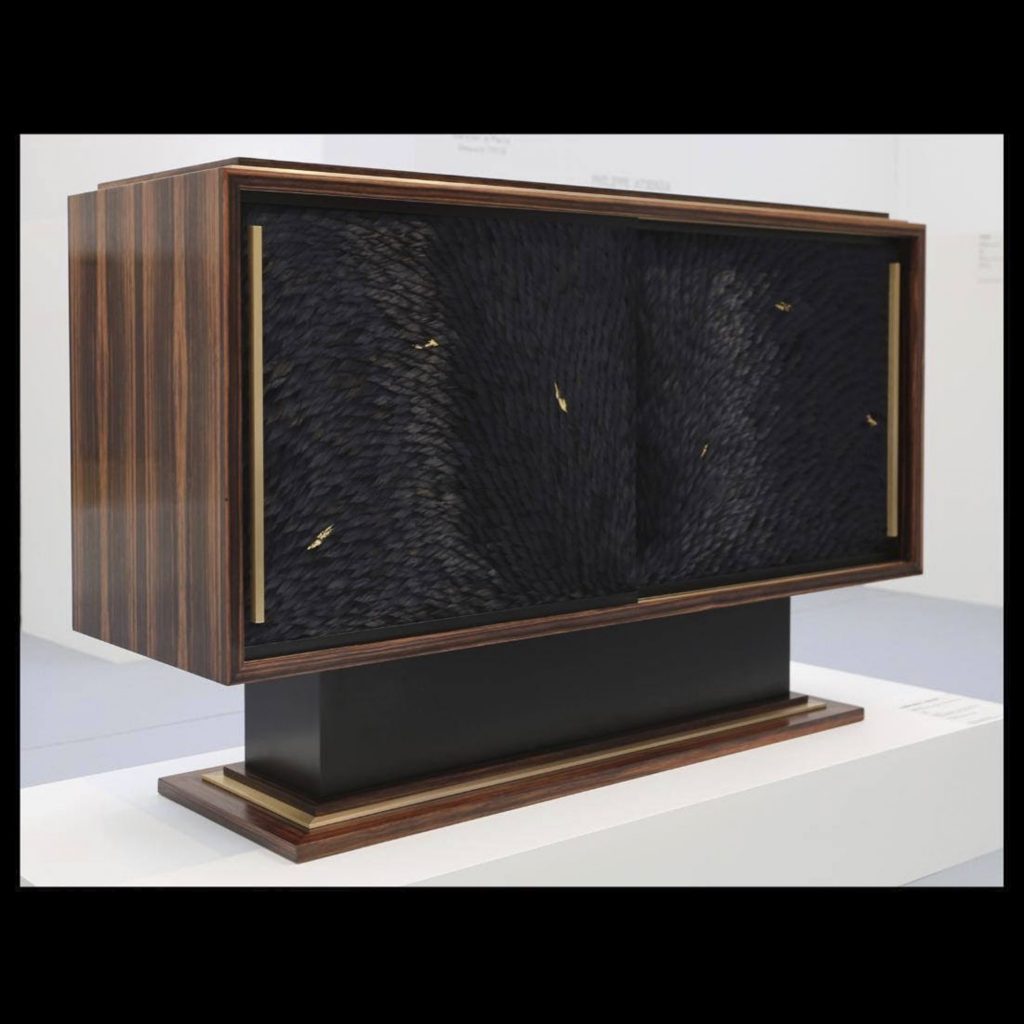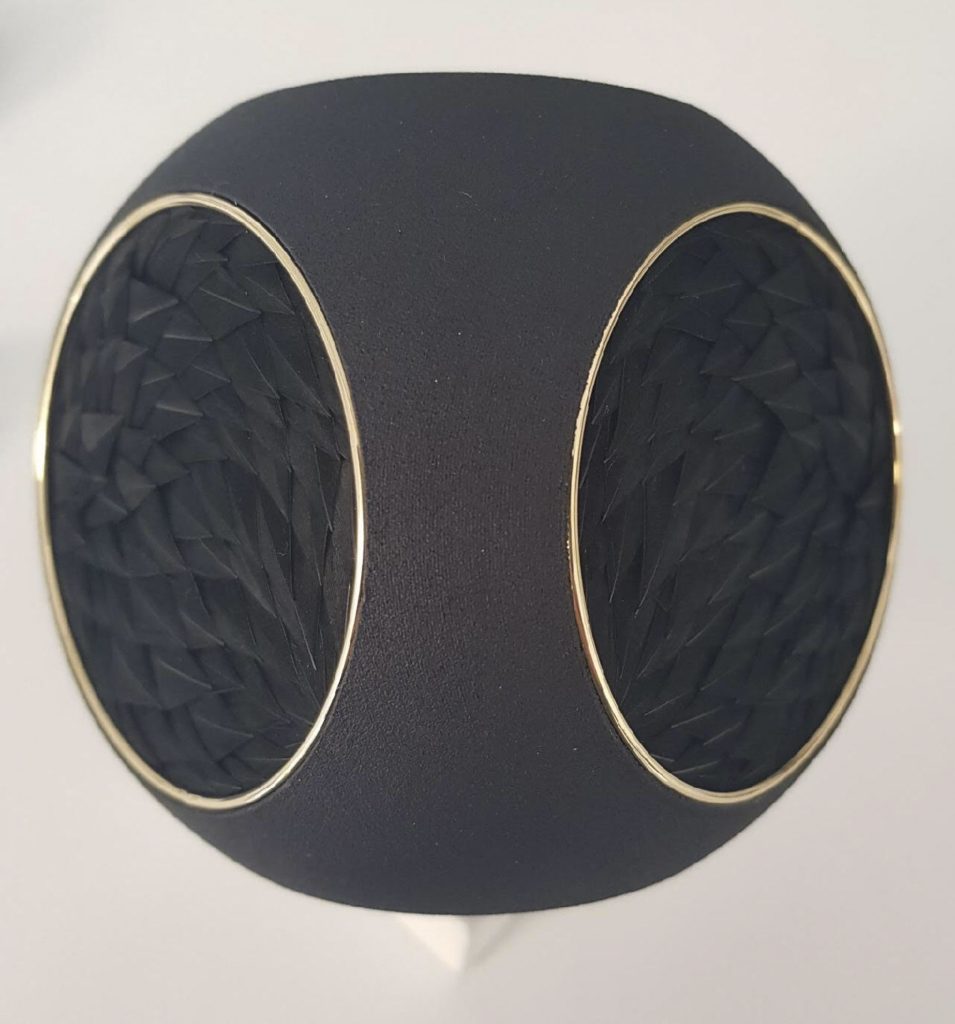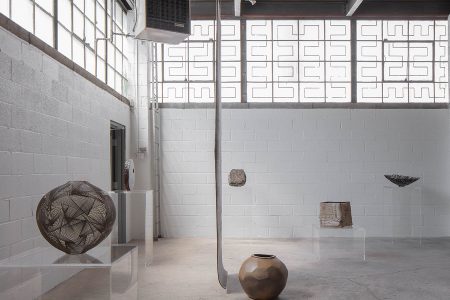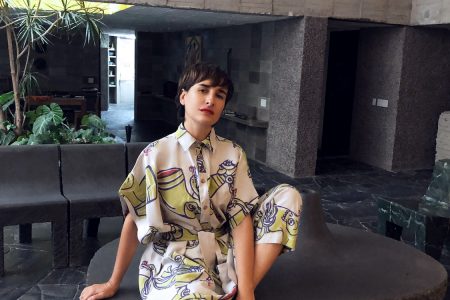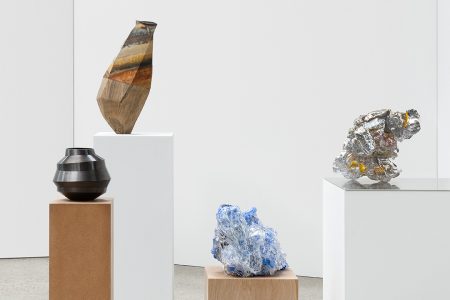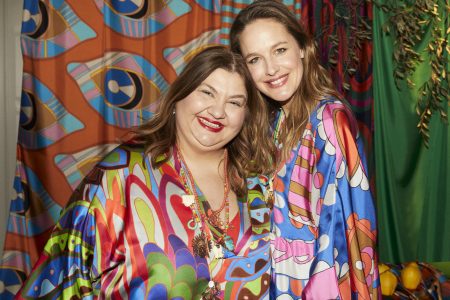Maison Julien Vermeulen: Transforming the Use of Feathers
Winner of the 2018 Fondation Bettencourt Schueller prize “pour l’intelligence de la main – Talents d’exception”, Julien Vermeulen and his Maison are one of the few feather artisans still practicing in France. Here, Julien shares with us his artistic vision and future hopes for his craft.
One of the few remaining feather artisans in France, Maison Julien Vermeulen is celebrated for its unique style and for bringing feather-crafting into the 21st century through its use of both traditional and contemporary techniques. Founded by 29 year old Julien Vermeulen in 2014, the young house has already established itself through their intricately detailed designs for major Haute Couture fashion houses like Dior, Chanel, Yves Saint Laurent and Louis Vuitton — and extends the use of feathers beyond fashion through their creation of immense wall panels, ornaments, sculptures and other decorative designs. His pieces, dark and minimalistic in their aesthetic, show that in the hands of a dedicated craftsman like Julien, peacock, ostrich, goose and pheasant feathers can become as malleable and versatile as paint. As he shares with us his artistic vision and future hopes for his craft, Julien talks to TLmag about the drive behind opening his own Maison at 24 and the differences between working in fashion and design.
TLmag: You were introduced to feather crafting through your lifelong passion for fashion design. Could you tell us a bit more about the path that lead you to founding your very own Maison at such a young age?
Julien Vermeulen (JV): My first job in fashion was working for Jean-Paul Gaultier as a shoe designer. There, I met Dominique Pillard – who was the feather craftsman at Jean Paul Gaultier’s Maison at the time. I was so intrigued by his work…almost envious! That’s when. I decide to go to Paris Lycée Octave Feuillet, the last school in France to teach feather skills. There, I gained as much knowledge and “know-how” as I could, and got the chance to pursue an apprenticeship with Maison Lemarié, and by extension Chanel too [Lemarié became a CHANEL Métier d’Art in 1996]. Two months after graduating, I decided to start my own Maison because I felt the need to develop new processes and applications with feathers. It was an ambition that I didn’t see being fulfilled if I were an employee at another house. Now, we’re still here and celebrating our five year anniversary!
TLmag: Now the student has become the teacher, as you train artisans who work at your own Maison how to work with feathers. How does that come about, and what’s the most essential thing that one must understand when it comes to working with feathers?
JV: I love to work with people who aren’t specialised in feather-crafting because that means that I get to teach them my techniques, and they can show me theirs. I feel that innovation starts when we combine our “savoir-faire”, our know-how, into a singular practice. Artisans who decide to work with me need to be patient, meticulous, and, above all, curious. I use specific traditional exercises — basic processes like recognising, cleaning, dyeing, selecting and cutting different types of feathers — to make sure that they truly understand the craft, and that they’re serious about it. Once they’ve proven themselves in these tasks, they can move on to other things, like glueing. The most important thing that one needs to remember when working with feathers is that they have to consider that the material is natural, and to treat it like a living material — you can’t go against the grain. It’s about having a dialogue with them — and feathers always have the last word.
TLmag: Feather artisans and their techniques have been around for quite a while, even though nowadays there are but a few left. Could you tell us a bit more about how you go about combining more traditional techniques with new technologies?
JV: Unlike some other feather artisans, I think I have a mainly artistic vision when it comes to the craft. Specifically, I enjoy working with these materials in relation to light, just like a painter would. I’m always looking for new applications for feathers, like decoration and installations, and I love when the viewer cannot recognise what it’s made of when they first look at it. The techniques in feather working aren’t a secret, as we still use the same tools that have been used for centuries: pliers, glue, scissors — the list goes on. Having said that, I love researching how I can combine my traditional skills with new technology. Recently, I worked with a designer to figure out how to use a laser cutter on feathers which would allow us to engrave intricate patterns on bigger feathers.
TLmag: You’ve worked with famous fashion houses such as Chanel, Dior and Jean-Paul Gautier. Yet, working with feathers, it feels like there must be an emphasis on patience, slowness and long-term projects. Is that the case? How does that fit into the worlds of fashion, which is very fast-paced?
JV: I consider feather crafting to be a bit like meditation: it’s slow and repetitive. It’s always a challenge to work for haute-couture because the deadlines are always so close together. Yet, somehow, we always find a way to succeed – it feels like a miracle!
TLmag: You also create bespoke fine-art pieces and site-specific installations – ranging from sculptures and decorative pieces to an “Illusion Wall” of 20 square meters covered with more than 10,000 feathers for the Palais de Tokyo. What is the process like then, when working on these spatial installations?
JV: When I work on fine art pieces, I have more liberty. Because the object’s function is different than in fashion, I’m free to use whatever material I want — and use feathers as paint. When I’m making art installations, I’m more focused on my own artistic reflection, my own vision that I want to put out into the world. I like questioning myself, and more importantly, surprising viewers.
TLmag: Your personal designs, which are mostly created with black feathers, are often described as minimalistic and masculine. What draws you to that colour palette and how does it inform your technique?
JV: I work with black feathers because the material offers a variety of colours within its blackness, which makes it seems almost metallic in a way. The colours, which range from green to purple, are vibrant details that make the material look and come alive. Making all those elements come together is my aim when creating new work. Working in monochromatic colours also allows me to sculpt feathers more precisely, and concentrate on furthering my research on replicating this graphic effect.
TLmag: What does the future hold for feather artisans and their craft?
JV: For now, I hope that my colleagues and I will preserve and continue to develop our wonderful craft and know-how. I also hope that feather crafting will no longer be confined to fashion, but will be implemented in many other formats through combining them with other materials like mosaic, leather and wood.
Cover Image: Julien Vermeulen by Antoine Lippens
